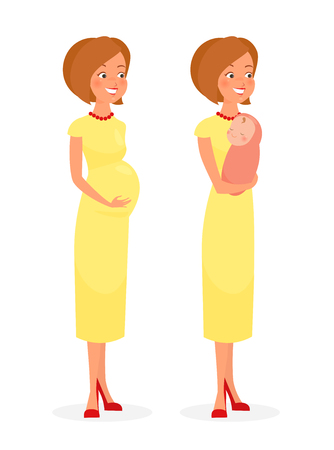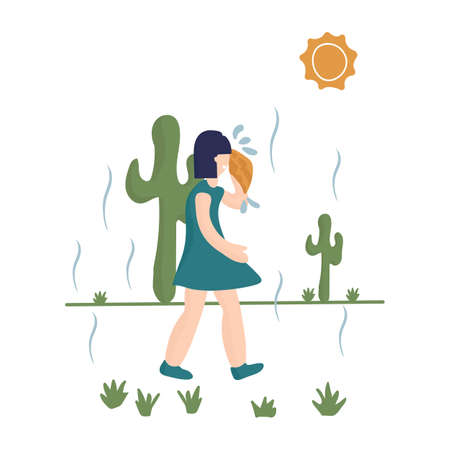Understanding British Weather: What to Expect
The United Kingdom is renowned for its highly variable weather, with conditions that can shift dramatically within a single day. Rain, wind, and sudden temperature changes are all common features of the British climate, making it particularly challenging when dressing babies for outdoor activities. Unlike more predictable climates, the UK often requires parents to be prepared for rain showers in the morning, bright sunshine by midday, and a chilly breeze come afternoon. This unpredictability means that choosing the right clothing for babies is not just about comfort, but also about safeguarding their health and wellbeing. Babies are especially vulnerable to fluctuations in temperature and moisture, as their bodies have a limited ability to regulate heat. Therefore, understanding the local weather patterns is essential for making informed decisions about layering and fabric choices. By being aware of these climatic nuances, parents can ensure that their little ones remain warm, dry, and protected against the elements throughout the year.
2. Choosing the Right Base Layers
When layering outfits for babies in the UK, selecting the appropriate base layers is fundamental to ensuring comfort and wellbeing across the country’s unpredictable weather conditions. The UK climate can shift rapidly, with dampness and fluctuating temperatures being commonplace. Thus, prioritising breathable and moisture-wicking fabrics is essential for keeping babies dry, comfortable, and protected from both chills and overheating.
Why Breathability Matters
Breathable fabrics allow air to circulate close to the baby’s skin, which helps regulate body temperature and prevent overheating—a risk factor associated with sudden infant death syndrome (SIDS). In the UK, where homes are often well-heated during winter but chilly outdoors, this balance is crucial.
The Role of Moisture-Wicking Fabrics
Moisture-wicking materials draw sweat away from the skin. This feature is especially important as even a short walk in a pram or carrier can cause babies to become sweaty under their clothes. Dampness left on the skin increases discomfort and can lead to rashes or chills when exposed to cooler air.
Recommended Fabrics for UK Seasons
| Fabric Type | Properties | Best for Season |
|---|---|---|
| Cotton (organic preferred) | Soft, breathable, gentle on sensitive skin | Spring, Summer, Indoors year-round |
| Merino Wool | Natural thermal regulation, moisture-wicking, odour-resistant | Autumn, Winter, Layering in cooler months |
| Bamboo Viscose | Highly breathable, hypoallergenic, excellent moisture control | All seasons, especially humid days |
Practical Tips for Parents
- Choose vests or bodysuits made from natural fibres as a base layer.
- Avoid synthetic fabrics like polyester directly against the skin as they may trap heat and moisture.
- Opt for seamless designs to minimise irritation and support delicate baby skin.
The right base layer forms the foundation of a weatherproof outfit—helping your baby stay comfortable whether enjoying a stroll through an English park on a breezy spring day or staying snug indoors during a rainy autumn afternoon.

3. Mid-Layers for Warmth and Flexibility
When dressing babies for the ever-changing UK climate, choosing the right mid-layers is crucial for maintaining warmth without restricting movement. The British weather is famously unpredictable, with sudden shifts from chilly winds to mild sunshine even within a single day. Therefore, insulating mid-layers should be both effective at trapping heat and sufficiently flexible to adapt to these variations.
Optimal Materials for Insulation
Look for soft, breathable fabrics such as fleece or merino wool when selecting mid-layers for your baby. These materials offer excellent thermal insulation while allowing moisture to escape, reducing the risk of overheating or skin irritation. Fleece is lightweight and quick-drying, making it especially practical for damp UK days, whereas merino wool naturally regulates temperature and remains comfortable even when damp.
Ensuring Comfort and Freedom of Movement
The ideal mid-layer should fit snugly but not tightly, providing enough room for your baby to move freely. Avoid bulky garments that can bunch up under outer layers or restrict arm and leg motion. Opt for styles with stretchy cuffs and hems, which help seal in warmth but remain gentle on delicate skin.
Adapting to UK Weather Fluctuations
Given the variability in UK weather, it’s wise to dress your baby in layers that can be easily added or removed. Cardigans or zip-up fleeces are particularly suitable, as they can be quickly adjusted as temperatures change throughout the day. Always check that each layer provides adequate coverage without being cumbersome, ensuring your child stays comfortable during outdoor adventures or indoor playtime alike.
4. The Essential Outer Layer: Waterproofs and Windproofs
When it comes to unpredictable British weather, the outer layer is crucial for keeping your baby dry, warm, and comfortable. Choosing the right jackets, pramsuits, and rain covers ensures reliable protection against sudden showers and blustery winds—common occurrences across the UK.
Choosing the Right Outerwear
For babies, opt for lightweight but robust waterproof jackets or all-in-one pramsuits designed specifically for infants. Look for features such as taped seams, elasticated cuffs, and a snug hood to maximise coverage while allowing breathability. UK-favourite brands like JoJo Maman Bébé, Regatta, and Muddy Puddles offer practical options tailored to local weather conditions.
Comparison of Popular UK Outer Layer Brands
| Brand | Main Features | Best For | Typical Price Range (£) |
|---|---|---|---|
| JoJo Maman Bébé | Softshell & waterproof; fleece-lined; adjustable hoods | Everyday outings; easy layering | 30–50 |
| Regatta | Puddle suits; insulated; reflective details for safety | Outdoor play; colder days | 25–45 |
| Muddy Puddles | ECO-friendly materials; high waterproof rating; generous sizing | Muddy walks; heavy rain protection | 35–55 |
| M&S (Marks & Spencer) | Padded coats; water-repellent finishes; machine washable | Urban environments; nursery runs | 20–40 |
Rain Covers: An Extra Shield for Prams and Buggies
No matter how well-dressed your baby is, a quality rain cover for the pram or buggy is essential for full-body protection during downpours. Universal-fit covers from trusted UK retailers such as Mamas & Papas, Smyths Toys Superstores, or Mothercare (online) are widely available. Ensure that the cover fits securely and allows adequate ventilation, preventing condensation build-up inside.
Key Tips for Selecting Outer Layers in the UK:
- Prioritise Waterproof Ratings: Choose garments with at least 3000mm hydrostatic head for reliable rain resistance.
- Easy Fastenings: Look for zips with storm flaps or popper closures for quick dressing during sudden showers.
- Reflective Details: Especially important during shorter daylight hours in autumn and winter.
- Launderability: Select machine-washable items to cope with frequent use in muddy British parks and pathways.
- Sizing Up: Consider buying slightly larger sizes to accommodate additional inner layers without restricting movement.
The right outer layer forms a protective barrier against harsh elements, giving parents peace of mind while ensuring babies remain snug, dry, and happy—no matter what the British weather brings.
5. Hands, Feet, and Heads: Complete Weather Protection
When it comes to keeping babies warm and dry in the UKs ever-changing weather, protecting their extremities is crucial. Babies lose a significant amount of body heat through their hands, feet, and heads, making targeted layering essential for outdoor comfort and health.
Mittens: Tiny Hands Stay Toasty
Look for soft, breathable mittens made from materials such as merino wool or fleece. These fabrics offer warmth without causing overheating. In wet conditions, waterproof mittens are popular among UK parents—often featuring Velcro fastenings to keep them secure and easy to put on wriggly little hands. Choose mittens with long cuffs that tuck under sleeves to prevent cold drafts or rain from getting in.
Socks and Booties: Defending Little Toes
Layering socks is a common practice in colder months; start with a thin cotton pair and add a thicker wool or thermal sock on top if needed. For outings in damp weather, waterproof booties provide an extra barrier against puddles and mud—something British toddlers are sure to encounter. Ensure socks fit snugly but not too tight, as circulation is key to warmth.
Hats: Essential for Head-to-Toe Warmth
A soft hat that covers the ears is indispensable for British babies, especially with chilly winds. Double-layered cotton hats work well for mild days, while insulated or fleece-lined hats are best for colder spells. For rain protection, many UK parents opt for hats with water-resistant outer layers or attachable hoods built into pramsuits.
Popular UK Accessories
Beyond basics, British parents frequently use pram blankets, footmuffs (insulated sleeping-bag style covers for prams), and rain covers during walks or school runs. These accessories add extra layers of defence against unpredictable weather while allowing quick adjustment as temperatures shift throughout the day.
Quick Tip:
Always carry an extra set of mittens and socks in your nappy bag—UK weather can change rapidly, and having dry replacements on hand prevents unnecessary discomfort for your baby.
6. Practical Layering Tips for Everyday UK Outings
Daily life in the UK often means facing unpredictable weather, so mastering practical layering for your baby is essential. Whether you’re heading out for a nursery drop-off, a stroll in the park, or a family outing, here are some real-life strategies to ensure your little one stays comfortable and protected.
Plan Ahead for British Weather
Always check the local weather forecast before leaving home. The UK’s climate can shift quickly from sunny spells to sudden showers. Dress your baby in breathable base layers that wick away moisture, followed by an insulating mid-layer such as a soft fleece or cotton jumper. Top it off with a lightweight, waterproof jacket that’s easy to remove if the sun comes out.
Layering for Nursery Runs
For nursery runs, opt for clothes with zips or poppers—these make quick changes much simpler, especially when managing car seats or buggies. Keep a spare set of dry clothes and a packable raincoat in your changing bag, just in case of unexpected downpours on your way home.
Outfits for Park Visits
When visiting parks, remember that grassy areas can stay damp even after rain has stopped. Waterproof trousers and wellies are must-haves for active babies and toddlers who love crawling or toddling on the ground. Add a hat that covers the ears and mittens secured with strings to keep little hands warm without getting lost.
Family Outings & Day Trips
On longer outings, dress your baby in easily adjustable layers—think cardigans or gilets with buttons rather than pullovers. This allows you to add or remove clothing as temperatures change throughout the day. Use blankets or footmuffs in prams for extra warmth during chilly mornings but be ready to remove them if it gets warmer later.
Stay Flexible and Observe Your Baby
No matter where you go, always watch for signs that your baby is too hot or cold: flushed cheeks, sweaty necks, or cold extremities signal it’s time to adjust their layers. By keeping versatile pieces at hand and responding promptly to weather changes, you’ll ensure your baby remains comfortable and healthy during all typical UK outings.


